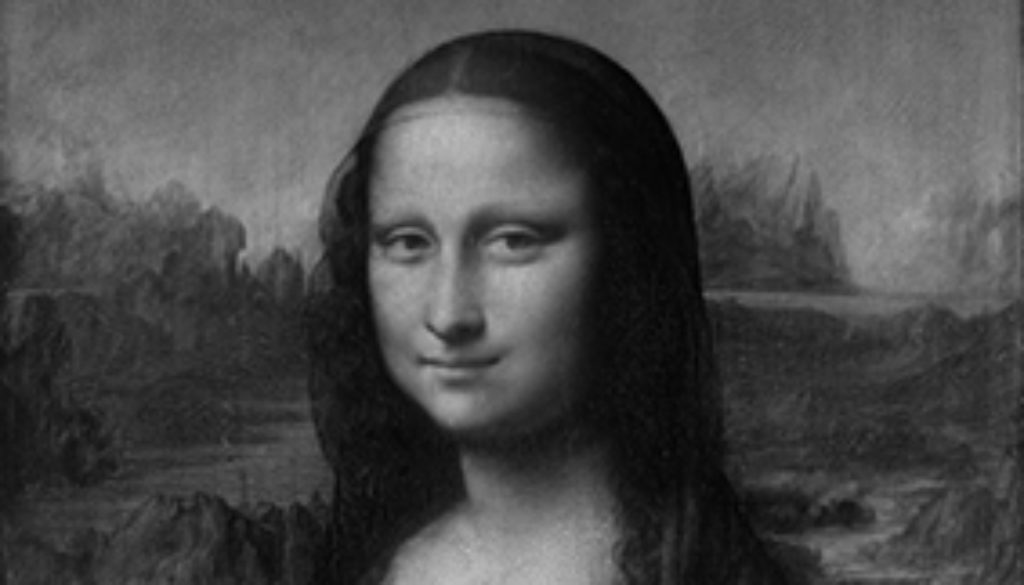Pascal and the
many Mona Lisas

Now that Pascal’s book is out in all its visual glory, and in the wake of the media interviews, edited as always to emphasise difference, it is worth laying out briefly how his researches look to me. It represents an extraordinary body of dedicated effort. He asked me for comments for his website – knowing that I disagreed with some of his interpretations. He is a good guy.
The LAM technique undoubtedly provides an important new weapon in the armoury of those interested in scientific examinations of layered paintings. The Holy Grail of scientific examination is to disclose the successive layers that lie below the present surface. Pascal’s mode of analysis, adapting mathematical techniques from signal processing, is revealing far more from the deeper layers than was previously possible, but it does not definitively isolate information from a single layer. We are also unclear as to what is happening as the different frequencies of light penetrate the paint layers to varying degrees and interact in diverse ways with the varied optical properties of the materials within the layers of the picture. This means that tricky acts of interpretation are necessary – even more difficult than is the case with x-rays and infrared. There is always the danger of seeing what we want to see. None of us are immune from this.
Looking at a selection of the LAM images as an art historian, I can see things that are wholly consistent with Leonardo’s creative methods, such as the indication of the use of cartoon and the restless manoeuvrings of contours. Some of what Pascal sees and reconstructs, such as the elaborate headdress, makes no sense to me in terms of design procedures or in terms of Renaissance paintings. I have difficulties with his detailed reconstructions of finished or semi-finished paintings under the surface of the present one. Leonardo’s processes were very fluid, with things coming and going, and with varied levels of finish across the picture. There is obviously a question of presentation here, and I would have resisted the temptation to translate the complex and often ambiguous images from the lower layers into such definite “pictures”.
My strong sense, at this early stage in our understanding of what we are looking at, is that we are witnessing something consistent with the documentation and with Leonardo’s ways of proceeding. I see the painting beginning as a direct portrait of Lisa – building on the innovations of Leonardo’s Milanese portraits – and becoming increasingly conceptualised as picture that combines the combines the tropes of Renaissance love poetry with a profound interest in the microcosm of the human body and the “body of the earth”. I see a steady evolution from portrait to “picture”. The change in her draperies from a Florentine style (as Pascal shows) into a more conceptualised array of veils etc., is part of this process of generalisation. All this is consistent with the idea I first expressed in my 1981 monograph, that Giuliano de’ Medici asked Leonardo to finish the beautiful and remarkable picture when they were both in Rome from 1513–16.
Pascal is opening up very important fields for analysis. We are at the beginning, Anyone is unwise to pronounce with certainty at this stage. I will have to make some sense of all this for the monograph of the Mona Lisa that I am currently writing with Giuseppe Pallanti.
December 15, 2015 @ 11:57 am
This comment has been removed by the author.
December 15, 2015 @ 11:59 am
Dear Professor Kemp,
I am curious if this kind of scan could cause the surface of the painting to lose its delicacy and sheer (it usually happened when we use an ordinary scanner to scan a photo) and at the same time, the layers underneath may be interesting but after all, not every man has Leonardo's mind in his soul to interpret them correctly.
The underneath is what Leonardo intended to conceal. If scientists are keen to reveal Leonardo's privacy, how to justify such request. Does he need someone's approval?
Grateful for your guidance!
YZ